Physical Address
304 North Cardinal St.
Dorchester Center, MA 02124
Physical Address
304 North Cardinal St.
Dorchester Center, MA 02124
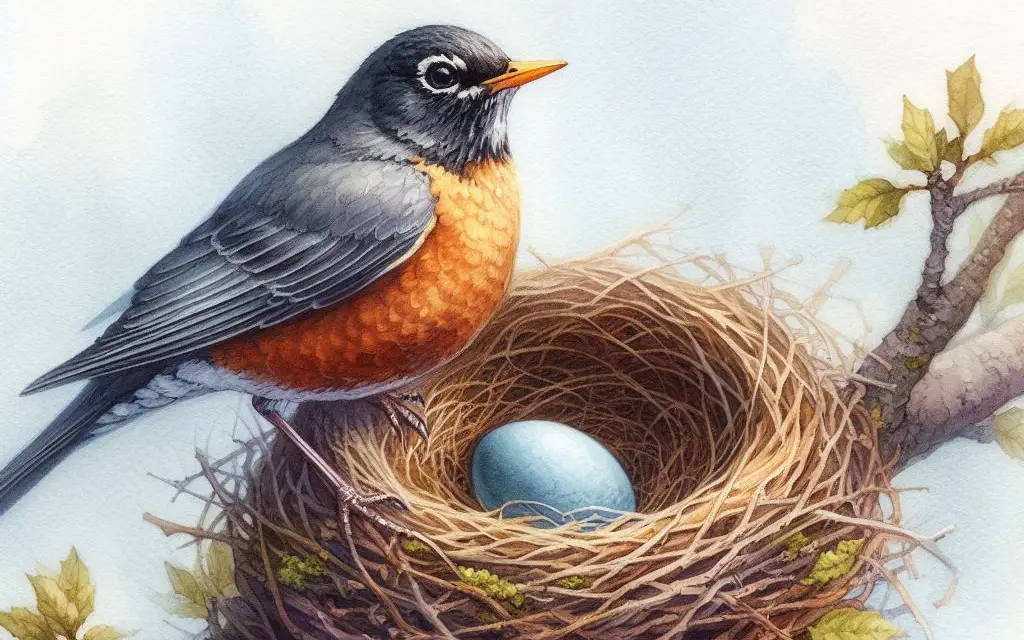
Have you ever pondered why do some birds lay blue eggs? The enchanting hue of a robin’s nest, dappled with sky-colored ovals, is more than just a springtime decoration. It’s a story writ in the script of avian biology, a tale of survival, environmental adaptation, and the stunning bird adaptations that our feathered friends have developed. This mosaic of bird eggshell coloration that includes illustrious blue egg-laying birds, strikes a balance within nature’s complex canvas, and it’s here today that we delve into this intriguing aviary marvel.
Dive into the world of birds with us as we explore the shades of blue that tint their offspring’s first cradle. From the robin’s nest in your backyard to the weaverbird’s woven hangout, there’s a scientific reason for every speck and shade. Let’s unfold the layers of these mysteries together!
As you gaze upon the robin’s nest and marvel at the blue gems nestled within, have you ever wondered about the bird egg color and its significance? The natural world is replete with marvels, and the varying bird egg colors explained by science offer a glimpse into the intricacies of bird reproductive strategies. Let’s delve into the captivating reason behind these azure treasures and uncover the role evolution of egg color and natural selection play in shaping the lives of our avian allies.
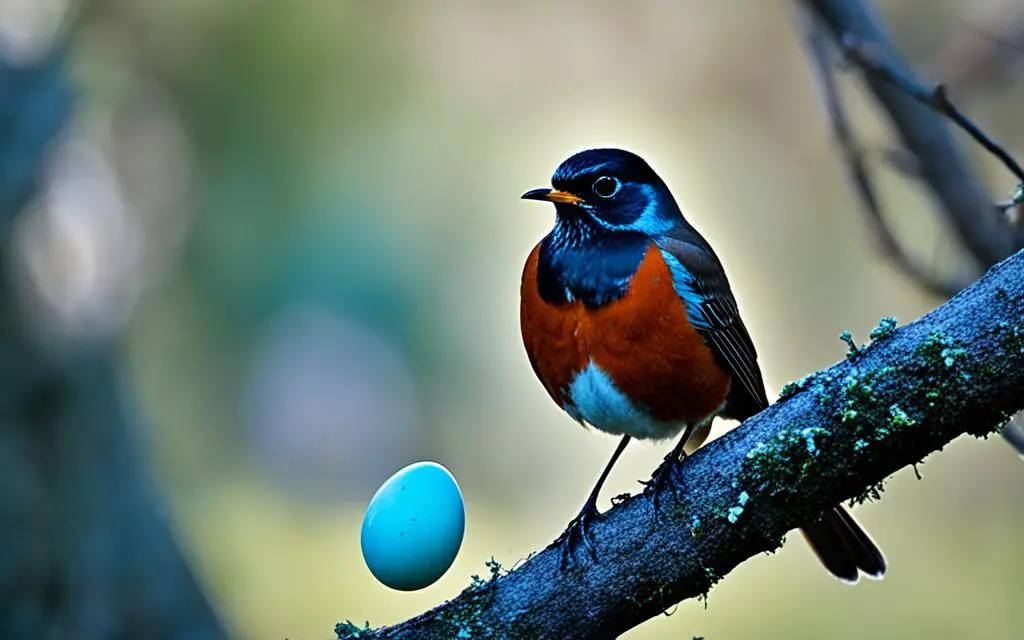
Biologists like David Lahti have been fascinated by the question since childhood; why do species such as the American robin, dunnock, and starling lay eggs with such a vivid blue hue? It’s a pigment called biliverdin that gifts eggshells their blue color, creating not just a visual delight but a protective barrier. Blue eggs effectively strike a balance, offering protection from the potentially harmful effects of UV radiation without causing the embryos to overheat as darker eggs might.
Note: For more insights into bird egg colors and other wildlife questions, you may want to explore further resources or reach out to experts in the field.
As we ponder these evolutionary marvels, it’s evident that bird egg coloration, particularly the mesmeric blue, is not just a matter of aesthetic appeal but a result of a profound evolutionary process that underscores the success and survival of numerous bird species.
The intriguing colors of bird eggs have captivated onlookers and puzzled scientists for generations. At the forefront of unraveling this colorful conundrum is biologist David Lahti from the City University of New York. Through his pioneering research, Lahti sheds light on the secrets behind avian egg pigmentation, revealing the delicate interplay between coloration and environmental factors. But how exactly do hues like the blue of the village weaverbird‘s eggs come to be, and what purpose do they serve? Join us as we explore the fascinating findings of Lahti’s work.
Lahti’s research has illuminated the function of blue eggshells as a remarkable natural compromise. It turns out, the specific shade of blue found in many bird eggshells strikes a perfect balance. This pigmentation provides protection from the harsh effects of sunlight and UV radiation without leading to the overheating issues that darker-colored eggs might experience. Blue, therefore, acts as a thermal regulator and a shield, ensuring the delicate embryo within is safeguarded during its most vulnerable stage.
But blue is just one hue in the extensive palette of bird eggshell coloration. Lahti’s quest to understand avian egg pigmentation has unveiled a spectrum of colors across different species, each tailored to specific environmental needs and reproductive strategies. From the sunshielding blue of the village weaverbird to the deep, heat-absorbing tones of emu eggs, nature’s reasons behind each variance are as intricate as the patterns they adorn.
As we continue to peel back the layers of nature’s grand design, the work of researchers like Lahti not only stirs our wonder but also deepens our understanding of the complex world birds navigate. The next time you spot an egg cradled in a nest, take a moment to appreciate the silent, yet profound dialogue it embodies with the sun above and the line of ancestors that came before.
Have you ever stopped to ponder the vibrant colors decorating the clutch of eggs in a bird’s nest? The array of hues is not just for show; they serve a pivotal role in the ongoing dance of evolution and bird adaptations. When examining bird eggs, the factors influencing egg color may include environmental challenges, predation risks, and the need for camouflage. But beyond mere concealment, these colors are a testament to the powerful force of natural selection.
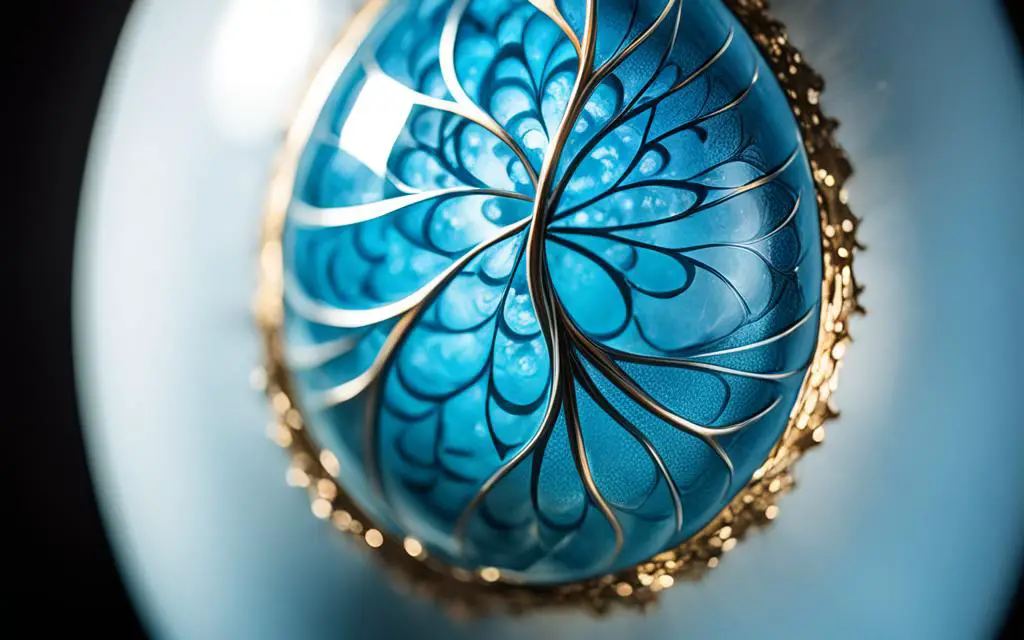
Among the myriad shades, blue has long captivated observers and scientists alike. It beckons the question: why this particular shade? The pigment biliverdin is largely responsible for the deep blues and aquamarine tones of some species’ eggs. This pigment doesn’t just add color; it acts as a shield, reflecting harmful UV rays to protect the delicate life developing within.
As your curiosity grows, look beyond the aesthetics and consider the resilience of these birds as they continue to thrive in complex habitats. The colors that paint their eggs are not just strokes of beauty but symbols of life’s masterful adaptation to our world’s ever-changing environments.
The mesmerizing coloration of bird eggs, particularly the blue shades, has long been a subject of fascination and study. At the heart of this avian artistry is a pigment known as biliverdin. Present in the varied palette of bird eggshell coloration, biliverdin is not just an aesthetic choice, but an essential component indicative of health and crucial for bird adaptations in their environment. Let’s delve into the production and roles of this egg pigment and explore how it shapes the enigmatic world of avian biology.
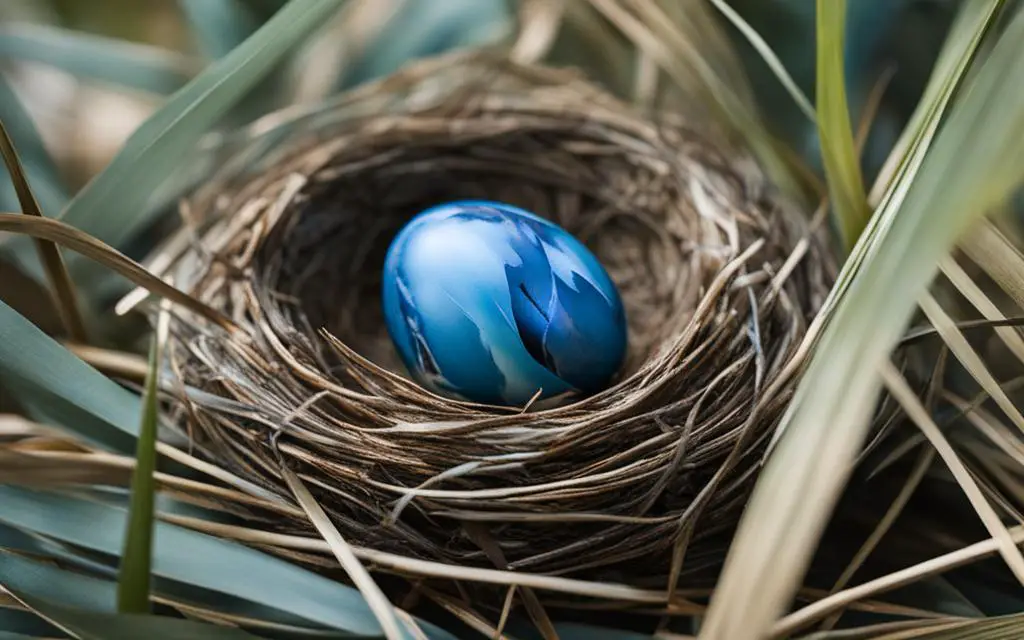
In the case of many bird species, such as the starling and the Eastern bluebird, the distinct blue color of their eggs is a result of biliverdin. This bile pigment, cascading from a Latin term meaning “green bile,” is secreted by the mother bird during the egg formation process. As an egg pigment, biliverdin is meticulously applied to the eggshell within the bird’s uterus, interweaving patterns and hues that are as unique as individual bird species themselves. This intricate process results in a breathtaking spectrum of egg color, serving functions beyond mere ornamentation.
Biliverdin’s significance extends from the avian domain to human biology. Similar to the way this pigment marks the transition of colors in a healing bruise on our skin, in birds, it provides essential protection to the developing embryo. The bluish-green tints seen in bruises indicate the presence of biliverdin, which then transitions to a yellowish hue as it converts to bilirubin, a substance ultimately processed and expelled by the liver. In the context of bird eggs, the deposition of biliverdin in eggshells reflects harmful UV rays, similar to how a shade or parasol might work, while also ensuring no overheating occurs, which protects the precious cargo nestled within the shell.
Understanding the role of biliverdin in shaping the stunning array of bird eggshell coloration is not only fascinating but underscores its importance in the continuity and bird adaptations for survival. So, whenever you encounter the vibrant blue of a bird’s egg, ponder the intricate biological dance that led to its perfect hue, a testimony to the marvels of avian biology.
Have you ever noticed the striking blue of a bird’s egg and wondered about the forces at play behind such vibrant coloration? Science reveals that bird eggshell coloration, particularly the shades of blue and green, plays a crucial role in the thermoregulation and protection of the egg and its developing embryo. The concept of sunblock is integral to understanding how birds manage the risks of overheating and exposure to UV radiation in their natural habitats.
Researchers believe these colors act as natural sunblock, a key to embryo development under the variable conditions of the wild. Just as you might apply sunscreen to protect your skin, birds have adapted a unique form of biological sunblock. The blue and green pigments in the eggshells help shield the delicate life inside from overheating and the sun’s potentially damaging effects.
These benefits are essential for species whose eggs are often exposed to the sun, especially when parents are away foraging for food. It’s the interplay between survival and the physical environment that influences the unique bird eggshell coloration. So next time you’re outdoors, take a close look at the eggs in a bird’s nest and appreciate the science behind these natural wonders. They’re not just incubators but finely tuned protective environments, developed through generations of adaption.
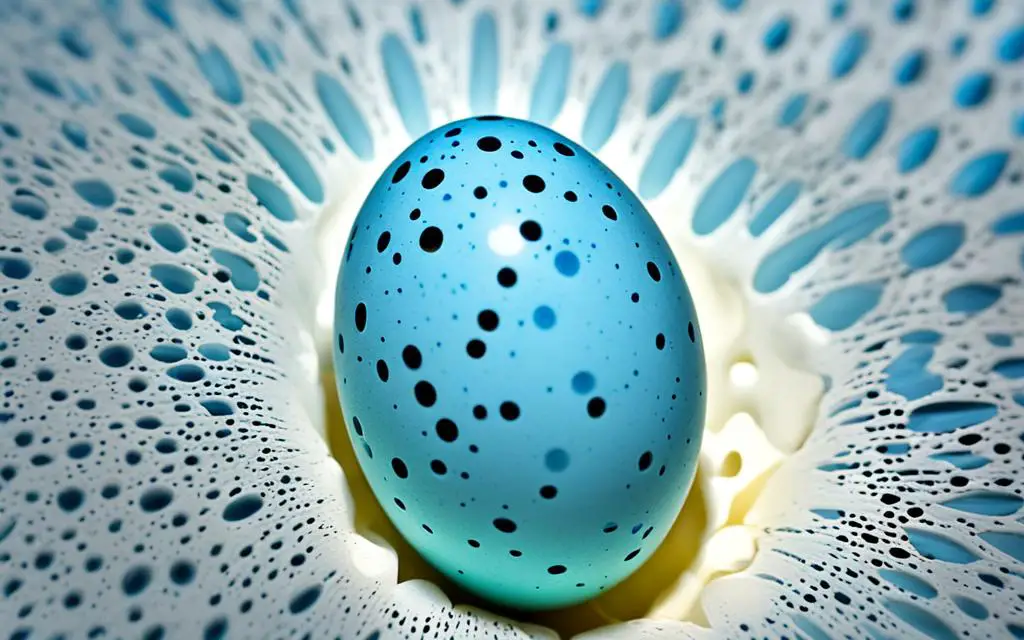
In the vast tableau of nature, each bird species has adapted its reproductive strategies to enhance its survival. The coloration of bird eggs is no exception, serving as a stunning reminder of nature’s ingenuity. As researchers continue to study these fascinating aspects of avian biology, we gain a deeper appreciation for the complexity of life and the natural systems that sustain it.
As you explore the diversity of nesting behaviors among birds, you’ll find that egg coloration can be a crucial factor. It’s a remarkable aspect of bird reproductive strategies that epitomizes the battle between the need for camouflage and the risk of brood parasitism. In this section, we’ll shed light on how bird egg colors serve as an evolutionary toolkit, facilitating everything from protecting the next generation against predators to intricate mating displays that underscore sexual selection.
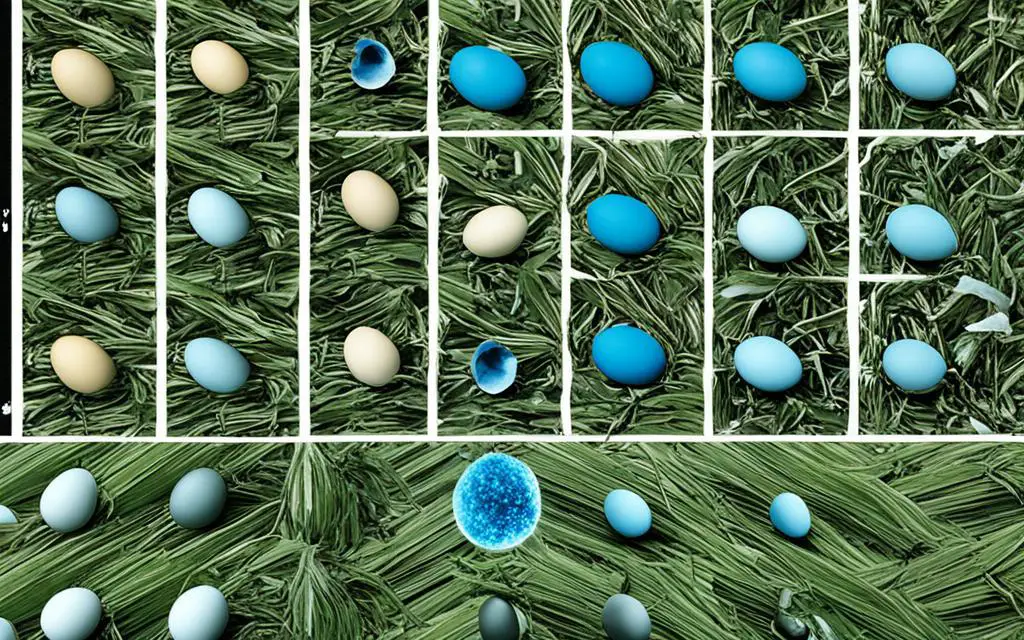
Colorful bird eggs do more than just catch the eye; they’re a multifaceted expression of survival and reproductive success. Certain birds employ vibrant hues to attract mates, leveraging the visual cues as indicators of vitality and health. Conversely, other species benefit from subtler shades, blending their eggs into the surrounding environment to avoid detection by predatory creatures.
The palette of eggshell pigmentation could also be a nuanced indicator of the laying sequence, with some studies suggesting a correlation between color intensity and hatching order. This fascinating aspect of avian biology allows birds to manage the energetic demands placed on hatchlings and their caregivers, fine-tuning their brood for optimum survival rates.
While much remains to be studied about the full implications of egg coloration in bird species, the compelling interplay between camouflage, brood parasitism, and bird health paints a vivid picture of the evolutionary creativity inherent in nature.
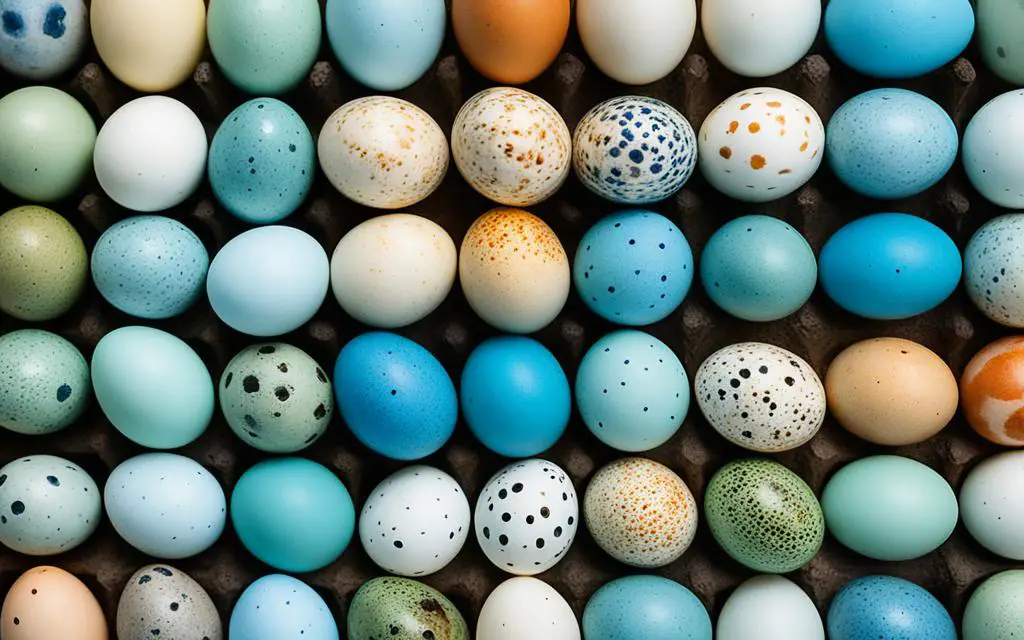
When you discover a nest in the wild, the color of the bird eggs can often give you clues about the nesting habits and behavior of the species. But what influences these color differences? Much can be learned about a bird’s lifestyle based on whether they are cavity nesters or open nesters, and these tendencies have a direct impact on egg color. Understanding this relationship gives us deeper insights into their survival strategies and the myriad of bird adaptations that have evolved over time.
Various factors influence the nesting behavior of birds, including predator presence, environmental conditions, and the need for camouflage. Birds like the American robin, known for their blue eggs, are open nesters. Their eggs’ bright colors may appear to be a disadvantage due to increased visibility to predators, but these colors could serve as a form of protection from UV radiation or overheating. On the other hand, the uncolored eggs of cavity nesters like owls and woodpeckers benefit from the security of their hidden nesting spots, rendering elaborate pigmentation unnecessary.
Let’s delve into the stark differences in egg color between birds that nest in the safety of cavities and those exposed to the open environment. For example, white eggs are almost exclusively found among cavity nesters whose nesting sites provide ample concealment. In contrast, open nesters have evolved egg colors and patterns that can either blend into their surroundings or provide biochemical protections. The clutch size, and even the timing of when these eggs are laid during the day, have been observed to correlate with the hues and patterns selected by nature’s palette.
| Bird Type | Egg Color | Nesting Location | Adaptation Benefit |
|---|---|---|---|
| Cavity Nester: Woodpecker | White | Tree Cavities | Camouflage |
| Open Nester: American Robin | Blue | Open Branches | UV Radiation Shield |
| Open Nester: House Finch | Speckled Brown | Shrubs/Buildings | Blending with Surroundings |
As you’ve seen, the colors, patterns, and even the sizes of bird eggs tell a story of survival and reproductive success—whether concealed within a tree hollow or boldly displayed in an open nest. The world of bird adaptations to their respective habitats is one of the fascinating tales of the natural kingdom, leaving a colorful trail of clues for us to uncover.
The kaleidoscope of egg colors dotting the avian landscape is not just happenstance; it is the artistry of natural selection artfully woven into the tapestry of avian biology. Have you ever marveled at the sight of a bird’s nest, speckled with eggs in shades from muted browns to striking blues? There’s an intricate dance of biology and environment happening right before our eyes—the compelling story of the evolution of egg color.
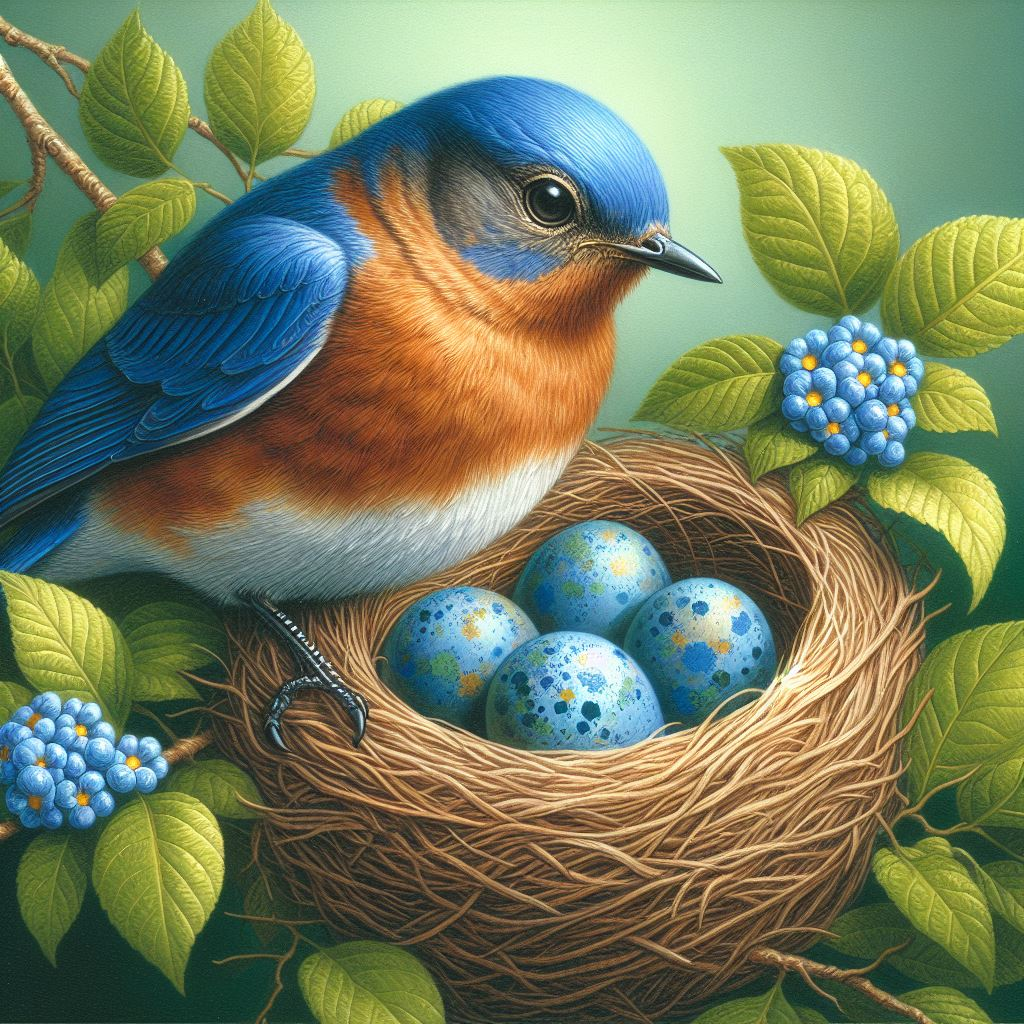
Envision eggs as nature’s canvases, each hue a stroke of evolutionary genius. From the protective mimicry of camouflaged browns to the sun-blocking brilliance of blue, every variation of bird eggshell coloration offers insights into the survival strategies that birds have adapted over millennia. Biologist David Lahti has delved into this vibrant world, illuminating the dual role of pigmentation as a shield from UV radiation and a coolant to prevent overheating.
In your journey to understand the extraordinary bird adaptations, witness how environmental pressures mold and sculpt the diversity we see today. Mimicking the very earth upon which they rest, or emulating the expansive sky above, eggs narrate a tale of life and its persistence. Lahti’s research reminds us that in every blue egg cradled in a nest, lies a chapter in the chronicle of natural selection, articulating the balance between visibility and viability.
As you behold the vast array of colors in a robin’s nest, appreciate the sophisticated mechanisms at play. The evolution of egg color is not merely a quirk of nature but a testament to the resiliency of life. In the hues of eggs, we find an echo of the past and a glimpse into the future, where the forces of natural selection continue to shape the ever-evolving story of our avian companions.
When you’re observing the nuances of nature, you might find yourself curious about why some birds, like the American robin, the Eastern bluebird, and the European starling, grace their nests with blue eggs. This captivating phenomenon encompasses more than just aesthetics; it’s deeply rooted in biology, ecology, and evolution. The explanation is multifaceted, with current research suggesting that these colorful shells offer significant benefits of blue eggs that go beyond mere decoration.
Ponder for a moment the potential advantages: blue eggs reflect harmful UV radiation and avoid the dangers of overheating, much like a sunshield for the precious life developing within. But that’s not the only theorized benefit. Consider the concept of brood parasitism, where one species cunningly lays its eggs in the nests of another. The distinctive coloration may help parents identify their eggs, thereby preventing such deceptive practices. Furthermore, the color of an egg might play into sexual selection, acting as a signal of a potential mate’s fitness and health — the brighter and bluer, perhaps, the better.
As the field of ornithology peels back the layers on this beautiful mystery, bird egg colors explained become a richer narrative of survival and strategy. Understanding why do some birds lay blue eggs? as well as other aspects of avian life teaches us more about the complexity of ecosystems and the creatures that populate them. These insights into the avian world underscore the continuing dance of adaptation and survival that unfolds in nests across the globe.

My name is Shane Warren, the author behind Your Bird Buddy – your ultimate guide to the wonderful world of birds! Unleash your inner avian explorer as we delve into a vibrant library of knowledge dedicated to all things feathered. From learning about diverse bird species from across the globe to understanding their captivating habitats and behaviors, I’m here to fuel your passion for these magnificent creatures. Not only that, but I also provide valuable insights on being a responsible and informed pet bird owner. Join our vibrant community and let’s celebrate the feathered wonders of the world together – one chirp at a time. And be sure to join our Your Bird Buddy Community over on Facebook!